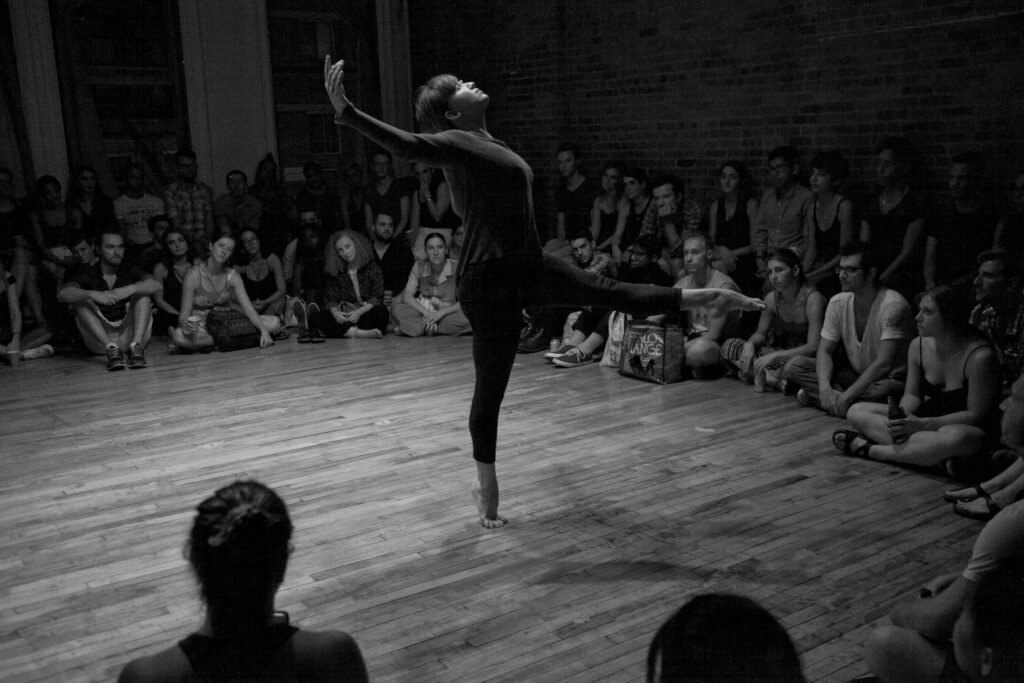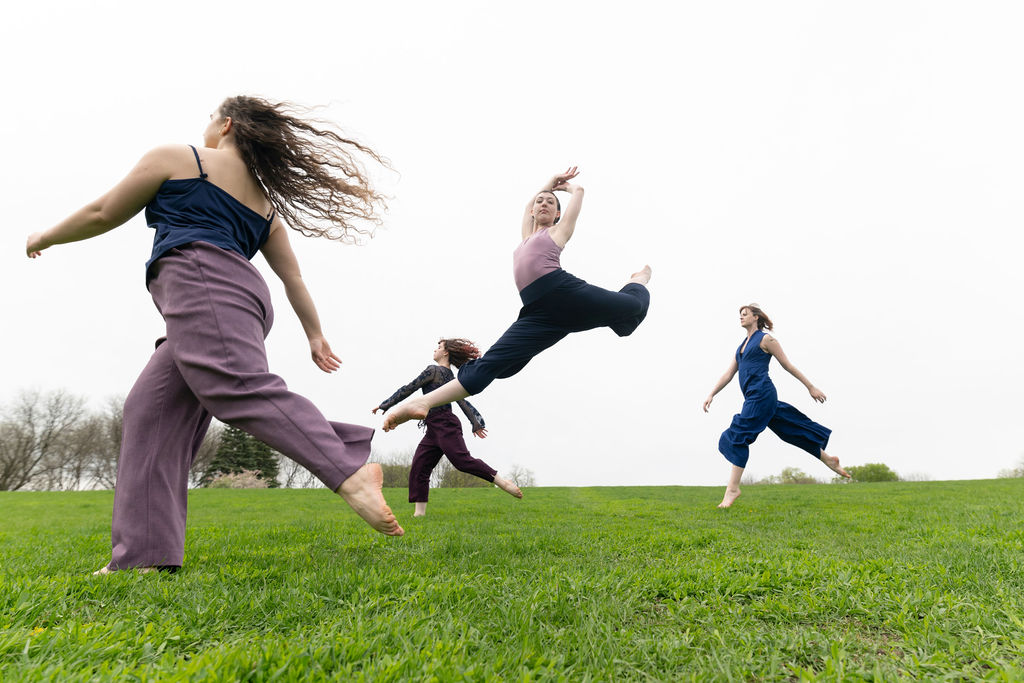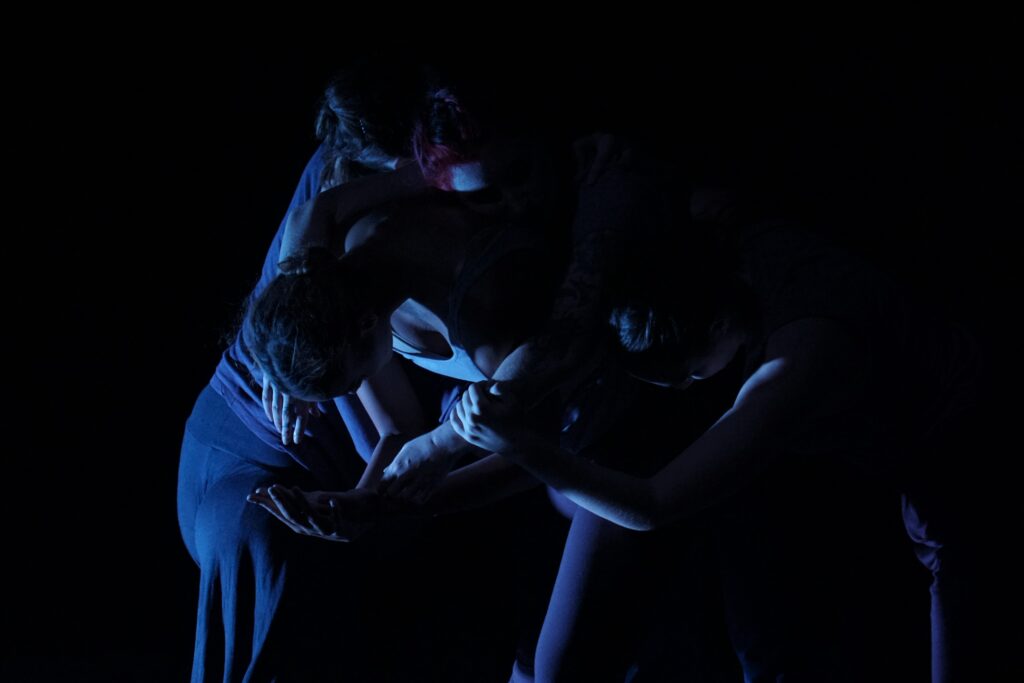June 11, 2025
By Tristan Bruns
Visiting an art gallery, one gets lost in the landscapes of the paintings and ponders the lives of the people depicted in portraits. If only one could enter the world of the painting, or that the poised figures might leap from the flat canvas. Well…
Fantasy becomes reality in Gallery of Dances, with world premieres by Amanda “Mandy” Milligan based on paintings by John Singer Sargent, and the Chicago premiere of “I Remember Damage, But What Am I?” a dance film by Milligan and Sean Rafferty—laden with special effects and surreal editing techniques. Presented by Darvin Dances at Chicago Danztheatre on June 20-21, the split bill includes repertoire revisited by Darvin’s founder, Mariah Eastman, about coping with trauma, contemplating life’s crossroads, the surreal experience of lucid dreams and playfulness in nature—some of these works have only been produced digitally during the COVID pandemic and make their physical debut here.
Three premiers by Milligan are presented as a dance triptych—referring to a painting split into three distinct panels—based on portraits by Sargent—”Lady Agnew of Lochnaw,” “Portrait of Madame X” and “El Jaleo”—set on the ensemble of Darvin Dances—intending to provide personalities to the woman immortally captured in Sargent’s paintings. “His work has this male gaze about it,” says Milligan, “but also these women have complex lives and personalities, they’re more than what’s in these paintings. We’re bringing that ‘outside the painting world’ to life.”

In “Ruckus,” Milligan draws on several elements of Sargent’s dance portraits—“El Jaleo” is part of a series of paintings of Spanish-Romani dance depicting working class artists (instead of poised aristocrats). Four dancers in flowing skirts kick up their heels to Hungarian folk songs played on viola by accompanist Erin Rafferty. The simple melody undulates between swift and lively to sudden stillness, the attention to control mirroring the frenetic interplay of band and dancer portrayed in the paintings. A projection of a sketch of the dance by a local visual artist comes to life, like looking over Sargent’s shoulder while he scratches into his sketchbook; Sargent himself makes an appearance as a character and engages in a duet with dancer Blake Campbell. Campbell then enters a solo unlike anything Milligan has created before. “[“Ruckus”] is probably one of the hardest things I’ve ever choreographed,” says Milligan. “My intention was to push the dancer to her absolute limits.”
“Lady” is a solo featuring Mikaela Dalton as the personification of Lady Agnew, a smirking woman wearing a semi-transparent chiffon dress, seated casually in a wingback chair decorated with flower petals of blue and red. What begins as a superficial impersonation takes an existential turn as Dalton explores the “Lady’s” inner world—the setting is made from 50 balloons released across the stage, sometimes flying in random directions, or sticking to the dancer like magnetic ornaments. “X” has the company of dancers wearing elegant black dresses, representing the different facets of sensuality, power and poise purveyed by the enigmatic “Madam X.”
Making its Chicago debut is “I Remember Damage, But What Am I?” a dance film by Milligan and videographer Sean Rafferty, with lighting design by Richard Norwood. Shot in black and white, the film shows six dancers entering a process that transforms their identities—expect themes of introspection, reflection, acceptance and fear. The film uses mirrors, projections and visual tricks to showcase the techniques of cinematography. “Often dance films are single-shot setups of the dance,” says Milligan. “It’s beautiful but doesn’t go into the intricate and interesting ways you can utilize editing and cinematography to make it… something that truly couldn’t happen on stage.” An example from the film is when dancer Blake Campbell appears to stand on either side of a mirror but is in fact inside a picture frame. She moves simultaneously in and out of the frame, two images dancing at once. As she moves, you only see her body within the frame; when her leg, head or torso extends past the frame, it disappears, and the only thing you can see are the detached body parts, still moving.

In a review of Darvin Dances, I wrote, “Eastman’s ability to keep the audience’s eyes moving with persistent action is worth repeat viewing…” Well, now’s your chance! Eastman revisits four works—”Efforts of Contemplation” (2018), “Patternalia” (2020), “Navigating the After” (2022) and “Journeys of a Crustacean” (2024)—each refined to reflect Eastman’s continued lived experience.
Following a violent assault, Eastman created “Navigating the After” both as a reconciliation and a response. “For a long time, I didn’t like making work that was outwardly personal,” says Eastman, until she spoke with other survivors of the same assailant and realized that “I wasn’t alone.” She realized that “Although many artistic works have addressed sexual assault, few speak to what happens after. It’s not a straightforward process. That’s when I created ‘Navigating.’” An excerpt titled “Popcorn” is about how a random event can upturn everything. Using the analogy of attending a movie theater, dancers make gestures like eating popcorn—until a startling moment in the movie obliterates the safe space, replaced with a world of fear and dismay. New to the work, a significant emphasis on certain phrases and patterns symbolize the need for survivors to be able to go forward but also feel the sadness of what happened. Eastman stresses that amidst the current political climate—perhaps referencing a state where sexual assault convictions do not deter candidates from winning elections—the work is more important than ever.

Other works by Eastman include “Patternalia,” about waking while dreaming. Two dancers flow serenely through a dream when—shock!—the duo morphs into a trio of “psychonauts,” conscious pioneers exploring the dream world, their movements becoming sharp and static. “Efforts of Contemplation” is about the whirlwind one experiences when encountering one of life’s crossroads. Originally performed on a confined stage, it is here expanded through lofty, spiral-like transitions and an overall heavier feel, reflecting Eastman’s now more nuanced view of life. “Journey of the Crustacean” lightens things up with dancers imitating the mating migration of crabs on Christmas Island, where residents erect infrastructure to help the crabs along, like bridges (here created by bodies) for the crabs to dig under with their gnarled claws. Awkward, goofy and weird, “Journey of the Crustacean” provides a healthy dose of humor to the evening.
Other works in the program include “Queen’s Head,” a new solo by Milligan inspired by “Lady Macbeth,” and an excerpt from Eastman’s “Inclined to Decline.”
Gallery of Dances is a chance for audiences to gain a deeper understanding of both famous works of art and the human condition. Milligan gives voices to the silent portraits of Sargent while Eastman delves into the ways humans deal with choice, trauma and reflection. Darvin Dances invites audiences to get lost amongst the landscapes and peer beyond the portraits in an evening where works of art come to life like never before.
Gallery of Dances runs June 20-21 at Chicago Danztheatre Ensemble, 1650 W. Foster. Showtimes are 8pm. Tickets are $20 – $45 with a limited number of discounted tickets for artists, available by clicking here or by visiting the event page here.
Copyright 2025, See Chicago Dance, All Rights Reserved

